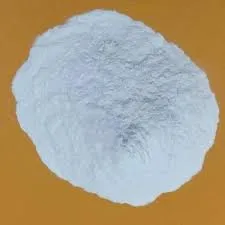
Nov . 30, 2024 22:52 Back to list
Understanding the Benefits and Applications of Redispersible Polymer Powder in Construction
Understanding Redispersible Polymer Powder (RDP) Key Benefits and Applications
Redispersible Polymer Powder (RDP) is a vital component in construction and industrial applications, particularly in the production of cement-based systems. These powders, typically derived from emulsion polymers, can be readily redispersed in water, forming a stable polymer film upon drying. This unique characteristic provides a plethora of benefits, enhancing the physical and mechanical properties of various construction materials.
What is Redispersible Polymer Powder?
RDP is a free-flowing powder that, when mixed with water, reverts to an emulsion. The primary ingredient is a vinyl acetate copolymer or similar compounds. Once added to a formulation, RDP contributes significantly to the performance and durability of the final product. The flexibility and toughness of the resultant mixture improve its adhesion, water resistance, and overall performance.
Benefits of RDP in Construction Materials
1. Enhanced Adhesion One of the standout features of RDP is its ability to improve the adhesion properties of different materials. When mixed with cement or similar compounds, RDP increases the bond strength between the substrate and the applied material. This translates into longer-lasting applications, reducing the risk of delamination and failure.
2. Improved Flexibility RDP enhances the flexibility of the final product, allowing it to better withstand stress and deformation. This flexibility is particularly valuable in environments subject to temperature fluctuations and various mechanical stresses.
3. Water Resistance The addition of RDP significantly enhances the water resistance of cement-based compounds. This characteristic is crucial in applications where moisture is prevalent, such as in tile adhesives and exterior wall coatings. Enhanced water resistance helps in preventing damage due to water infiltration, thereby extending the lifespan of structures.
4. Reduced Shrinkage RDP helps minimize shrinkage during the curing process. This reduction in shrinkage is critical, especially in large pours and façade applications, where cracking can compromise aesthetics and structural integrity.
redispersible polymer powder rdp

5. Improved Workability RDP also contributes to improved workability of formulations. The powders help maintain a creamy consistency that enhances the ease of application and handling. This can be particularly beneficial in high-volume projects, where efficiency and speed of application are essential.
6. Versatile Applications The versatility of RDP allows it to be used in a variety of applications. From tile adhesives to plaster, render, and sealants, RDP serves as a critical additive across different product lines. Its adaptability to various systems means it can cater to both professional contractors and DIY enthusiasts looking for enhanced performance in their projects.
Applications of RDP
RDP finds its applications in numerous areas, including
- Tile Adhesives Used to improve adhesion and durability in both interior and exterior applications. - Cement-Based Plasters Enhances the performance of plasters, providing flexibility and resistance to weather conditions. - Self-Leveling Compounds Contributes to the flow properties and setting characteristics, ensuring a smooth finish. - Mortars Increases adhesion and reduces water absorbency in masonry applications. - Exterior Coatings Provides resistance to moisture and flexibility, which is necessary for outdoor applications.
Environmental Impact and Sustainability
With growing environmental concerns, the development and use of RDP have also moved towards sustainability. Many manufacturers have started offering eco-friendly RDP options that comply with strict environmental regulations. These products are often produced with lower volatile organic compounds (VOCs), contributing to safer application environments and completion of green building requirements.
Conclusion
In summary, Redispersible Polymer Powders (RDP) are transforming the construction industry by enhancing the properties of various materials used in construction. The numerous benefits—ranging from improved adhesion and flexibility to water resistance—make RDP an indispensable additive in modern construction products. As the industry continues to evolve, the role of RDP in improving both performance and sustainability will undoubtedly expand, solidifying its place as a cornerstone in the building materials market. By incorporating RDP into construction practices, manufacturers and builders can achieve superior results, leading to long-lasting and durable structures.
-
Versatile Hpmc Uses in Different Industries
NewsJun.19,2025
-
Redispersible Powder's Role in Enhancing Durability of Construction Products
NewsJun.19,2025
-
Hydroxyethyl Cellulose Applications Driving Green Industrial Processes
NewsJun.19,2025
-
Exploring Different Redispersible Polymer Powder
NewsJun.19,2025
-
Choosing the Right Mortar Bonding Agent
NewsJun.19,2025
-
Applications and Significance of China Hpmc in Modern Industries
NewsJun.19,2025







